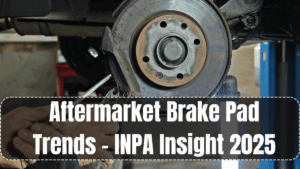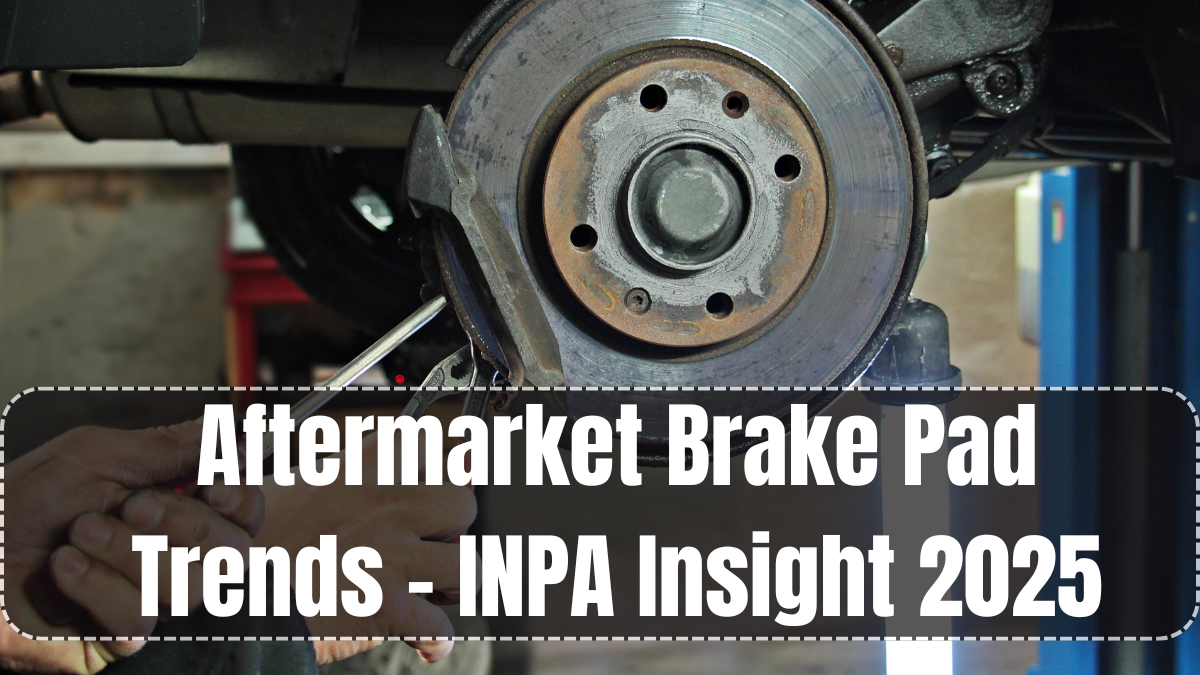Braking systems are the backbone of vehicle safety, and in 2025, the focus has sharply shifted toward advanced, eco-friendly, and high-performance solutions. The Aftermarket Brake Pads Trends 2025 reflect a major transformation driven by evolving safety norms, environmental regulations, and consumer demand for quality. With the INPA (Indian National Parts Authority) releasing new compliance metrics, both manufacturers and retailers are adapting to meet higher expectations.
In the Indian aftermarket, brake pads are among the most frequently replaced components. This has made them a key focus area for innovation, regulation, and customer awareness. Whether it’s a two-wheeler in rural India or a luxury SUV in urban highways, reliable braking matters everywhere—and the 2025 trends prove that the industry is responding fast.

Key Material Innovations in 2025 Brake Pads
The heart of Aftermarket Brake Pads Trends 2025 lies in material science. Asbestos has long been banned, and the latest brake pads are now developed using safer, more durable materials that also offer smoother performance.
Top materials trending in 2025:
-
Ceramic Blends: Reduced noise, longer life, low dust emission
-
Kevlar-Infused Composites: Higher heat resistance and fade control
-
Copper-Free Formulations: Eco-friendly and regulatory compliant
-
Carbon-Ceramic Hybrids: Used in performance vehicles, now entering mid-segment cars
-
Reinforced Resin Matrix Pads: Improved pad life for city and fleet vehicles
These materials provide better grip, consistent performance in diverse temperatures, and longer replacement intervals—essential for Indian driving conditions.
INPA’s Role in Shaping Quality and Safety
The INPA has issued new guidelines under the Aftermarket Brake Pads Trends 2025 directive to standardize pad quality across brands and prevent counterfeits.
Notable compliance requirements:
-
Mandatory Friction Code Labeling (e.g., FF, GG Ratings)
-
Brake Fade Performance Tests at 100°C to 400°C
-
Shear Strength Benchmarks for bonded linings
-
Wear Indicator Compatibility for modern vehicles
-
QR Code Verification Tags for authenticity check via INPA portal
All INPA-compliant pads now include holographic seals and traceable batch numbers for buyer assurance.
Leading Brands Driving Aftermarket Innovation
Several domestic and global brands are spearheading the Aftermarket Brake Pads Trends 2025, introducing new SKUs and vehicle-specific lines for the Indian market.
Top brands and offerings:
| Brand | Pad Type | Key Feature |
|---|---|---|
| TVS Apache Parts | Ceramic Series | Noiseless city braking |
| Bosch India | LongLife Eco Brake Pads | Copper-free, environmentally friendly |
| Rane Brake Lining | KevlarX Performance Pads | Fade-resistant highway driving |
| Brembo India | Premium Ceramic Segment | For premium sedans & SUVs |
| ASK Automotive | Value Plus Semi-Metallic | Budget-friendly commuter range |
Each brand aligns with the INPA framework, and some offer mobile-based scanning apps to verify part authenticity at the point of sale.
Demand Trends in the Indian Market
The Aftermarket Brake Pads Trends 2025 are also shaped by how and where vehicle owners buy and use replacement parts.
Key market insights:
-
Increased demand for low-dust, noise-free pads in metro cities
-
Heavy-duty variants for taxis, logistics fleets, and rideshare vehicles
-
Rise in online ordering through Amazon, Flipkart, and B2B portals
-
Preference for semi-metallic pads in Tier 2 and Tier 3 cities due to cost
-
Workshops favoring pads with longer warranty and dealer support
Fleet operators are also opting for predictive maintenance tools that link pad wear sensors to mobile apps or fleet dashboards.
Safety and Environmental Impact
As road safety becomes a nationwide priority, Aftermarket Brake Pads Trends 2025 emphasize not only stopping power but also environmental compliance.
Sustainable and safety-focused advancements include:
-
Pads designed for lower particulate emissions to reduce urban pollution
-
Brake pads integrated with wear sensors and ABS modules
-
Packaging made with biodegradable material or reusable trays
-
Encouragement of recycling programs for used pads by authorized dealers
-
Dual-compound formulations to reduce rotor damage and prolong life
These innovations align with India’s broader goals for clean mobility and safe urban infrastructure.
FAQs
What are the latest materials used in 2025 brake pads?
Ceramic, Kevlar composites, copper-free blends, and resin-based hybrids are the most commonly used materials in modern brake pads.
Are aftermarket brake pads safe to use?
Yes, as long as they meet INPA-approved quality standards and are installed correctly, aftermarket pads are reliable and safe.
How can I check if a brake pad is genuine?
Look for the INPA QR code, friction code marking (like FF/GG), and batch number. You can verify these on the INPA portal or via brand apps.
Which brake pad type is best for city driving?
Ceramic or semi-metallic pads with noise-reduction features are best for city use due to frequent braking and stop-start conditions.
Do all pads now come with wear indicators?
Most premium and mid-range pads in 2025 include wear indicator slots or support integration with OEM wear sensors.
Click here to know more.
